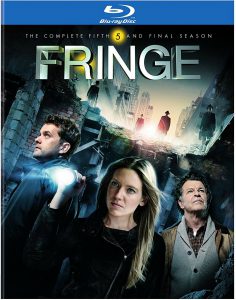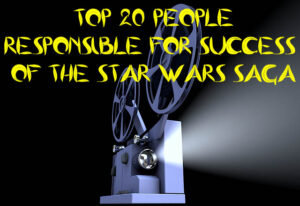To me, one of the most exciting things about the end of “Fringe” is that I can now look forward to rewatching the show on DVD someday. For five seasons, I watched every episode as it aired on Fox, but I’ve found that people who watched it in large chunks on DVD embraced it more than me. Ironically, like a lot of complex TV shows (“Lost” being another prime example), “Fringe” didn’t play as well with the weeklong gaps.
Of course, the true TV greats should be able to play well on a TV schedule and on DVD. To me, at least on my first go-around, “Fringe” wasn’t great, it was merely very good. Both a problem with and a credit to “Fringe” is the fact that it often did things that were never done on TV before. On my second viewing, I’ll be able to brace myself. I spent so much time over these five seasons and 100 episodes just trying to figure out what was going on (especially in the middle three seasons) that I didn’t absorb the show as much as I should’ve.
It’ll be fascinating to follow the show’s progression now that I know what it is. Jeff Jensen of Entertainment Weekly summed up “Fringe’s” strange place in TV history nicely when he said it was designed to be a mainstream hit and ended up being a cult classic. My impression of “Fringe” runs slightly counter to the general consensus that it started slow out of the gates and peaked in the third season. It was my No. 3 show of 2009 (Seasons 1-2) and No. 6 show of 2010 (Seasons 2-3), but it just missed my top 10 the past two years although it was never in danger of being bumped from my DVR queue.
Contrary to most critics and fans, I actually liked the emphasis on standalone weird-science stories at the beginning (Remember when “The Pattern” was the only nod to a mythology?). Then I felt it got a bit too caught up in the character relationships in Season 2 (particularly Peter-Olivia, although John Noble is good enough as Walter that I’m OK with the Walter-Peter stuff). Still, I can’t argue against now-iconic “Fringe” imagery like the typewriter/mirror setup that sent messages between the two worlds and the notion of “First People” (Was that ever really explored like it should’ve been?).
I felt Season 3’s bouncing back and forth between Blue World and Red World stories, and the different characters in each (played by the same actors, though) distanced us from the series’ core of weird science, even though I liked seeing Detective Francis (Kirk Acevedo, who was underused and whose Blue World version was killed off too soon) and I enjoyed new character Lincoln Lee. But looking at all the “best episode” lists out there, I’m reminded that there were some intimate, guest-star-driven gems in Season 3 even though the premise seemed too epic for that. On my rewatching, I think I’ll find more great episodes in that season than I gave it credit for.
Like most fans, I found Season 4 to be the weakest, as Peter disappeared and we had to endure the process of him slowly re-phasing into our world. And even after everything I’ve read, I’m still not clear if the characters at the start of Season 4 are supposed to be exactly the same people that we followed for the first three years in the Blue World or if they are alternate-timeline (Orange World?) versions. When Olivia finally got her memories of Peter back (essentially becoming the Olivia we know and love again, even if she was technically on a different timeline), the show got back on track a bit, although I frankly don’t remember much about how last season ended. I think it had something to do with defeating the teleporting Season 1 villain a second time, apparently because this was a new timeline.
Season 5, which concluded on Friday, has been a 13-episode movie about the battle in 2036 pitting the fascist Observer (super-smart — and bald — future humans with the emotion parts of their brains removed) government against our freedom-fighting heroes. They are inspired by the sacrifice of Peter and Olivia’s daughter Etta, who in my opinion should’ve had more episodes before she died. The season was far removed from the standalone roots of “Fringe” that appeal to my sensibilities, but for what it was, I think it was well done.
More so than specific episodes or arcs, I’ll remember “Fringe” for Walter’s lab in the Harvard basement; the science may have been cutting-edge, but the lab was warm and homey. Along the same lines, I love how “Fringe” was peppered with VHS tapes and black-and-white TVs and record players, and if the show ever looked like a sterile sci-fi future, that was only because we were in the realm of the villainous Observers or the borderline-villainous Massive Dynamic. Set mostly in Boston and New York, “Fringe” looked like Vancouver — which is always a good thing — but somehow it was its own Vancouver, leaning toward the blues and grays and greens — with the occasional blast of orange amber, of course.
I’ll remember Walter’s idiosyncrasies, such as eating licorice even as he dissects a brain, and calling Astrid by the wrong name (In a nice moment in the finale, we learn that he knew her name all along). I’ll remember that while the fringe science sometimes got a little repetitive (the dips into the water chamber, the brain reading, the putting together of futuristic machines, the Observers tilting their heads to steal people’s memories), “Fringe” fairly regularly dreamed up things that other contemporary shows wouldn’t touch with a 10-foot pole.
“Fringe” was quality, cool, smart TV, and I promise myself I’ll revisit it someday.


